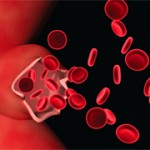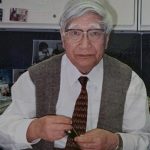initial IVIG therapy. For another example, Dr. Tremoulet is currently working with colleagues on a grant to study adjunctive therapy in high-risk patients, comparing IVIG with steroids to IVIG with infliximab.
Dr. Tremoulet also points out that to get better outcomes, we need to increase early recognition and diagnosis of these patients, who are often first seen by other types of clinicians. “The plea is to really keep a high index of suspicion for Kawasaki disease. We can only apply these guidelines once the patient makes it to us,” she concludes.
ad goes here:advert-1
ADVERTISEMENT
SCROLL TO CONTINUE
Ruth Jessen Hickman, MD, is a graduate of the Indiana University School of Medicine. She is a freelance medical and science writer living in Bloomington, Ind.
References
- Gorelik M, Chung SA, Ardalan K, et al. 2021 American College of Rheumatology/Vasculitis Foundation guideline for the management of Kawasaki disease. Arthritis Rheumatol.
- Chung SA, Langford CA, Maz M, et al. 2021 American College of Rheumatology/Vasculitis Foundation guideline for the management of antineutrophil cytoplasmic antibody-associated vasculitis. Arthritis Rheumatol. 2021 Aug;73(8):1366–1383.
- Maz M, Chung SA, Abril A, Langford CA, et al. 2021 American College of Rheumatology/Vasculitis Foundation guideline for the management of giant cell arteritis and Takayasu arteritis. Arthritis Rheumatol. 2021 Aug;73(8):1349–1365.
- Chung SA, Gorelik M, Langford CA, et al. 2021 American College of Rheumatology/Vasculitis Foundation guideline for the management of polyarteritis nodosa. Arthritis Rheumatol. 2021 Aug;73(8):1384–1393.
- Ramphul K, Mejias SG. Kawasaki disease: A comprehensive review. Arch Med Sci Atheroscler Dis. 2018;3:e41–e45.
- Hedrich CM, Schnabel A, Hospach T. Kawasaki Disease. Front Pediatr. 2018 Jul 10;6:198.
- McCrindle BW, Rowley AH, Newburger JW, et al. Diagnosis, treatment, and long-term management of Kawasaki disease: A scientific statement for health professionals from the American Heart Association. Circulation. 2017 Apr 25;135(17):e927e999.
- Dionne A, Burns JC, Dahdah N, et al. Treatment intensification in patients with Kawasaki disease and coronary aneurysm at diagnosis. Pediatrics. 2019 Jun;143(6):e20183341.
- Rigante D, Andreozzi L, Fastiggi M, et al. Critical overview of the risk scoring systems to predict non-responsiveness to intravenous immunoglobulin in Kawasaki syndrome. Int J Mol Sci. 2016;17(3):278.
- Son MBF, Gauvreau K, Tremoulet AH, et al. Risk model development and validation for prediction of coronary artery aneurysms in Kawasaki disease in a North American population. J Am Heart Assoc. 2019 Jun 4;8(11):e011319.
- Pendergrast J, Armali C, Callum J, et al; QUEST Research Program. A prospective observational study of the incidence, natural history, and risk factors for intravenous immunoglobulin-mediated hemolysis. Transfusion. 2021 Apr;61(4):1053–1063.

